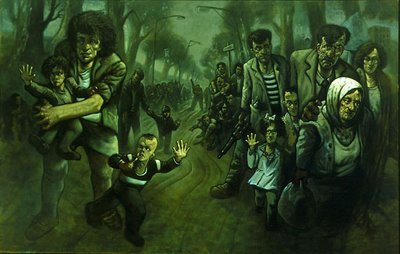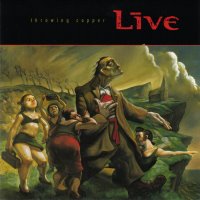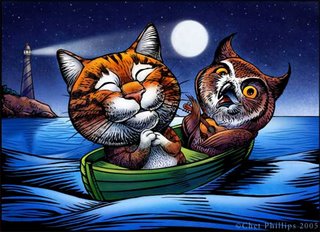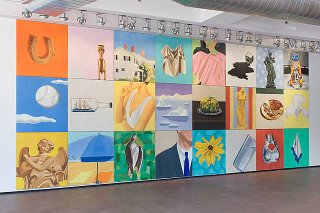Image Essay #4

I chose this image by Scottish artist Peter Howson, entitled Road to Zenica. I believe this is a good representation of some of the topics covered in class this week. Not only is the circuit of meaning relatively open for interpretation, there are lots of small details. Needless to say, I spent a long time staring at this image attempting to make sense of it. There is a lot of depth as the image stretches back and includes a lot of people. Diagonals are also rampant, creating a very interesting composition with an illusion of space. The painting has a depressing appearance to it, and while the figures are very detailed, they're also distorted somewhat.
Initially the composition, while aesthetically pleasing, made little to no sense. I could gather that the people in the painting were migrating away from something, but I had little idea what. After a little research, I discovered that Zenica is a city in Bosnia and Hertzegovina that played a key role in the Bosnian War from '92 to '95. The city became a refugee center for ethnic Bosniak refugees seeking to escape the ethnic cleansing of the time. After a second viewing with this knowledge, the artist does a good job in capturing the mood of desperation and sorrow.
I found out about Peter Howson because he actually painted the cover of one of my favorite band's album covers. Live's 1994 CD, Throwing Copper has an image by Howson entitled Sisters of Mercy. That image always had an interesting look to it - I spent countless hours staring at that one.

Above: Live - Throwing Copper


